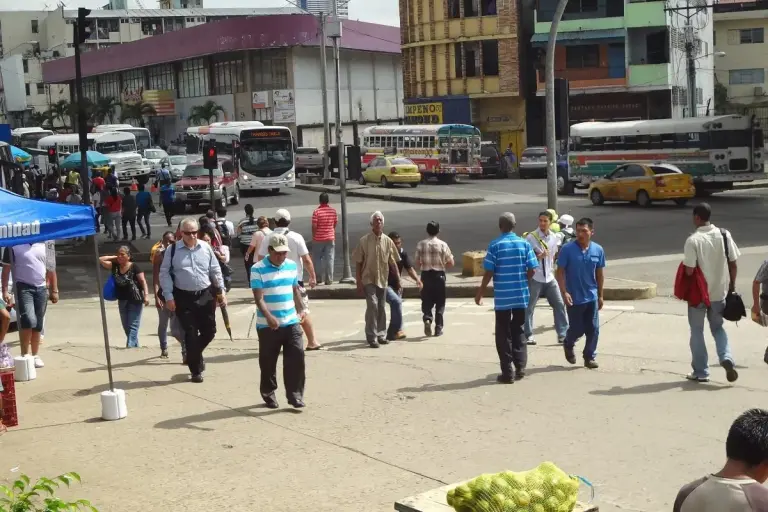Panamanian security forces are achieving historic successes against international drug trafficking while simultaneously failing to curb rising street crime. The nation has intercepted a record 52,000 packages of cocaine so far this year according to the National Aeronaval Service. Despite these high-profile maritime victories, official data shows homicides, robberies, and thefts continue to plague local communities. This stark contrast reveals a deep disconnect between Panama’s effectiveness against transnational crime and its struggles with domestic public safety.
The Ministry of Public Security reported 438 homicidios occurred between January and September this year. While this figure represents a slight decrease from the 456 murders recorded during the same period in 2024, violent crime remains a persistent concern for citizens. Property crimes have actually increased moderately, with theft complaints rising to 12,819 cases and robberies climbing to 3,956 incidents in the first nine months of 2025.
A Tale of Two Security Crises
Former Administration Attorney General Rigoberto González Montenegro identifies a fundamental problem in Panama’s approach. He argues the country demonstrates high efficiency against international narcotics networks but fails to apply that same effectiveness to crimes impacting the general population. The core issue, according to González, lies in a fragmented and inconsistent criminal policy that lacks continuity between government administrations.
We are highly efficient in the fight against international drug trafficking, but we are not equally efficient against the crime that hits the population, [Translated from Spanish]
González suggests that while Panama possesses a formal crime-fighting strategy, its implementation depends too heavily on changing political leadership. He acknowledges that police departments contain well-prepared officers with clear plans for improving efficiency. Their expertise often gets ignored when new authorities arrive with different priorities. Each administration tends to restart security strategy from scratch rather than building upon existing frameworks.
National Police Director Jaime Fernández provided context for the homicide statistics, noting that only about two percent of murders relate to common delinquency. The overwhelming majority connect to disputes between gangs and groups controlling organized crime. This distinction highlights the complex nature of violence in Panama, where sophisticated criminal enterprises operate alongside opportunistic street crime.
The Cycle of Reactive Security Policies
González observes a troubling paradox as Panama reinforces its global reputation for intercepting drug shipments. Internally, the nation cannot sustain effective citizen security policies. He attributes this gap to a management style that operates on reaction rather than prevention. Security forces address criminality only after it explodes into public view. A week with ten or fifteen violent deaths prompts renewed focus and promises, but that attention fades until the next crisis emerges.
This cyclical response prevents the consolidation of long-term programs. Every wave of violence generates headlines and political commitments without creating lasting structures. González emphasizes that criminal problems cannot be approached through temporary measures alone. They require sustained programs maintained consistently over time. The current system lacks the institutional memory and strategic patience needed for meaningful impact.
We attend to criminality only when it explodes. When there are 10 or 15 deaths in a week, then we want to take up the topic again, but later we let it pass until it happens again, [Translated from Spanish]
The former attorney general questions the frequent resort to punitive proposals without technical foundation. He recently criticized discussions about implementing life imprisonment in Panama, describing the legislative proposal as a temporary response to public outrage. Such measures often emerge from political pressure rather than comprehensive study. Without an integrated policy framework, the country will continue debating the same solutions every time violence spikes.
Institutional Disconnection Undermines Security
González argues that combating criminality requires an integrated system where no single institution works in isolation. He uses a soccer analogy to illustrate his point. A team cannot succeed with an excellent forward and a defense that does not perform. No matter how many goals you score, you will also concede them. The justice system functions similarly, requiring coordinated effort between police, prosecutors, and judges to achieve successful outcomes.
This disconnection explains much of the inefficiency against common crime. The National Police possesses technical personnel and well-prepared middle management, according to González. Strategic decisions often get made outside this pool of expertise though. The critical question becomes whether adopted decisions come from this technical perspective or from external visions that change priorities and break continuity. This disruption affects everything from patrol strategies to community engagement programs.
Domestic violence statistics further complicate the security picture. Cases remain virtually unchanged from 2024 to 2025, with 11,883 reports this year compared to 11,966 last year. These numbers suggest deeper social issues that maritime drug interdiction cannot address. They point to the need for preventative measures that extend far beyond traditional law enforcement responses. A comprehensive approach would require coordination between social services, educational institutions, and economic development agencies alongside police and prosecutors.
Panama faces a difficult security balancing act. The country must maintain its crucial role in international narcotics interdiction while developing more effective strategies for local crime prevention. This dual challenge demands both the sophisticated intelligence and logistics used against trafficking networks and the consistent, community-focused approaches needed for neighborhood safety. The solution likely lies not in choosing one priority over the other, but in building bridges between these seemingly separate security worlds. Success will depend on creating policies that address both the sophisticated networks operating offshore and the immediate threats affecting citizens on land.



